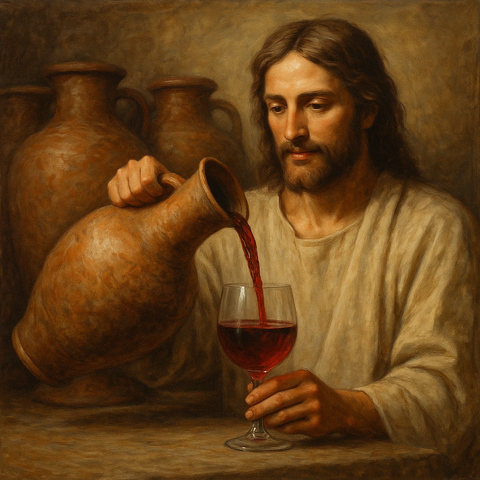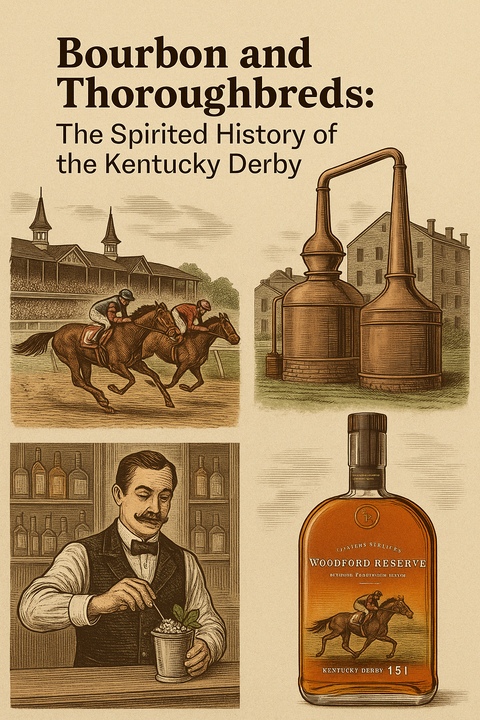If you’ve ever felt pressure to bring a good bottle to a party, imagine being Jesus at the Wedding at Cana. The wine runs out. His mother gives him the look. And next thing you know, he’s turning ceremonial washing water into party fuel.
It’s the first recorded miracle in the Gospel of John. But here’s the question we’re trying to answer: What kind of wine did Jesus actually make?
First, the Context: Galilee, 1st Century
The wedding took place in Cana, a small village in Galilee. The region was known for vineyards even in ancient times. Grapes were one of the biblical “seven species” of the land, and winemaking was already centuries old.
Wine wasn’t a luxury—it was a staple. Water was often unsafe to drink on its own, and wine (often diluted) was a safer, common option. But wine at a wedding? That’s where you splurged. That’s where you brought out the good stuff.
Which brings us to the comment made by the banquet master:
“Everyone brings out the choice wine first and then the cheaper wine after the guests have had too much to drink; but you have saved the best till now.”
What he meant: Jesus didn’t just make wine. He made really good wine. Better than what the host had stocked.
So What Was in the Cup?
We don’t know exactly what varietals existed in Galilee 2,000 years ago, but we do have educated guesses based on archaeological evidence, DNA analysis of ancient grape seeds, and traditional winemaking methods of the time.
Possible Candidates:
-
Marawi – An ancient white varietal still grown in parts of modern-day Israel and Palestine.
-
Bittuni – A red grape thought to be similar to Pinot Noir, but earthier.
-
Hamdani / Jandali – White grapes native to the Judean hills, still used in biblical winemaking revivals.
-
Syrah’s ancestor? – Some scholars think Syrah (Shiraz) or its early relatives may have been in circulation, prized for body and structure.
Was it red or white? Most scholars lean toward red—for practical and symbolic reasons. Red wine stored better in clay amphorae, and it carried strong ritual significance in Jewish culture. Plus, let’s be honest—if you’re performing your first miracle, you’re not making white zinfandel.
We like to imagine it was deep ruby, earthy and herbal, with wild tannins, stone fruit, and maybe a dusty fig note. A little rustic, maybe even unfiltered. The kind of wine you’d cellar if you had a time machine—and a cork.
Fermented with Faith
Here’s the kicker: it wasn’t just wine. It was instantaneously fermented, aged, and ready to drink. No vineyard. No harvest. No time. Just six stone jars filled with 20–30 gallons of ceremonial water each—and boom, you’ve got somewhere between 120–180 gallons of divine juice.
That’s almost 900 bottles of miracle wine. Enough for a Bronx Ferragosto.
What Would It Taste Like Today?
If we had to recommend something for your next “Cana-style” celebration, try these:
-
Gravner Anfora Rosso – Earthy, ancient-method wine aged in amphora, reminiscent of Old Testament winemaking.
-
Aglianico del Vulture – Bold, rustic, volcanic red that tastes biblical.
-
Marawi or Jandali blends – Some wineries in the Levant are reviving these grapes; hard to find, but fascinating if you can.
-
Etna Rosso – Bright acidity, smoky volcanic minerality—a wine that feels both ancient and alive.
Final Thought: A God of Good Taste
The real miracle might not be the transformation of water into wine—it’s that Jesus made something worth savoring. He didn’t settle. He made wine that impressed the pros, lifted the spirits, and kept the party going.
And if that’s not divine hospitality, you tell me what is. Have a happy Good Friday!




Comments (1)
I don’t think I ever considered the nature of the wine Jesus made. The speculation in the article was as entertaining as it was intelligently rendered. I’d be curious to see what wine might have been served at the last supper. Thank you.